Light flow
This size is for lighter periods, which are the flows that tend to occur on the first or last days. They're a great option for tweens and tampon newbies.

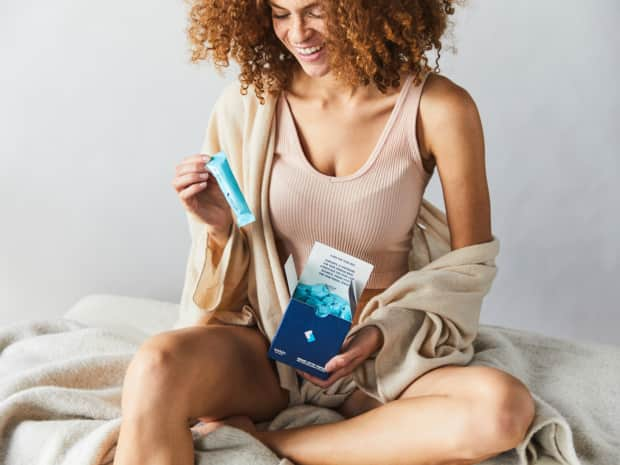
Last Updated: June 15, 2021
Let's breaks down the info you deserve to know around the period products you're putting in your body — and the footprint they leave behind.
Tampons: convenient, inexpensive, easy. And if you’re one of the estimated 33.4 million US women who uses them and have already explored transitioning to natural products in other areas of your life, you might be wondering if it’s worth it to make the switch to organic tampons.
Does it really make any difference whether or not your tampons are organic? And are conventional tampons with plastic applicators that bad? We’ll help you decide if these feminine hygiene products are the next things you should swap for natural alternatives.
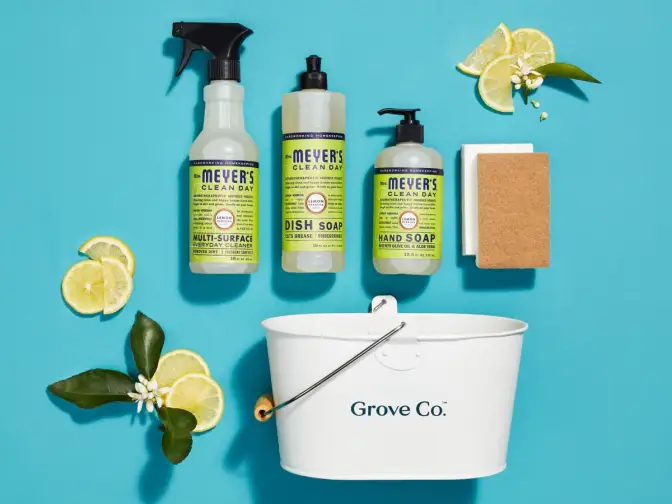
Wondering who Grove is, what types of products we offer, and how to get a free gift set when you sign up? Learn more about flexible monthly shipments, customizing your shipment, and joining millions of happy households — no monthly fees or commitments required.

Making the switch from conventional to natural period products makes sense when you consider that your vagina is one of the most absorbent parts of your body. Regular tampons or conventional (non-organic) tampons are usually made out of a bleached and whitened mix of synthetic rayon and “regular” (aka grown with pesticides) cotton. They often also contain dyes and chemical fragrances (unfortunately, we can’t be more specific, because there’s currently no law requiring manufacturers to list what goes into their tampons). That’s pretty concerning because the vagina is comprised of highly-absorbent mucus membrane tissue. So whatever is on your period products gets absorbed into you. There have also been no studies testing the safety of these ingredients when used long-term inside someone’s body.
“Tampon users use around 11,000–13,000 tampons in their lifetime, so what’s in these products really matters,” says Meika Hollender, co-founder and president of Sustain, a period care and sexual wellness brand that offers certified-organic tampons in a range of sizes. “That’s the equivalent of a tampon inside your body for a total of six years.”
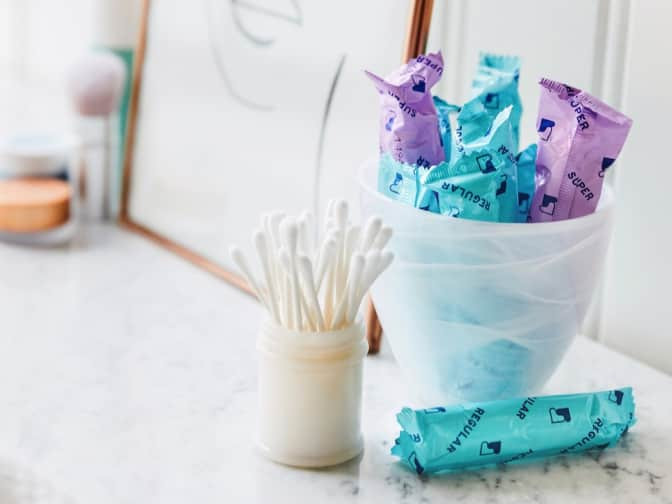
Not only are organic tampons eco-friendly, but they are also body-friendly. When you choose sustainable, organic tampons, you’re using a product made with certified organic cotton — free of hazardous chemicals or dyes and grown without the use of toxic pesticides — that’s produced under safe factory conditions.
And organic tampon applicators are usually crafted from BPA-free plastic, primarily plant-based plastic, or from 100% biodegradable and compostable cardboard.
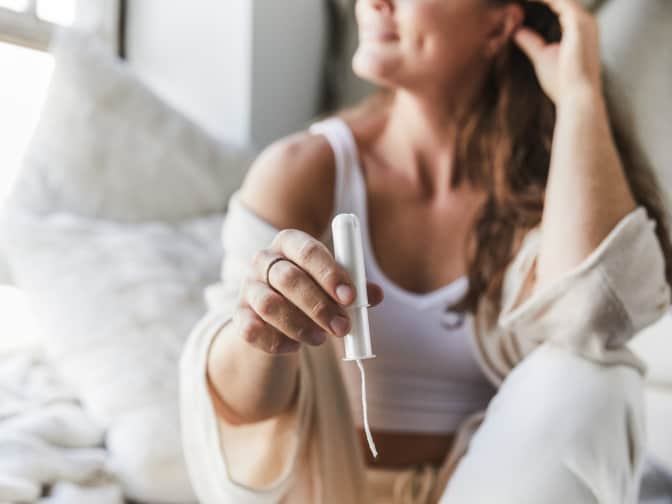
Most conventional tampon brands rely on non-biodegradable, landfill-clogging plastic applicators (although applicator-free options are available). Organic tampons, like their conventional counterparts, also come in designs with and without an applicator, but there’s generally a more eco-friendly focus to what makes up those applicators.
For those who prefer the ease of plastic, brands like Sustain and Seventh Generation use recycled and/or plant-based plastic, and Cora also uses plastic applicators that are BPA-free. Natracare offers a biodegradable cardboard applicator if you want to go full sustainable.
Did you know?
Some tampon users think a product labeled “100% cotton” is a healthy choice, but “100% cotton” is not the same as organic cotton. Processed cotton is often treated with the pesticide glyphosate, a known carcinogen.
“Certified organic cotton” means no pesticides. So there is a huge difference between 100% cotton and 100% organic cotton.
This size is for lighter periods, which are the flows that tend to occur on the first or last days. They're a great option for tweens and tampon newbies.
Generally used for the second, third, etc. days, regular-size tampons are a tried-and-true option.
For your heaviest days of bleeding or when you need a little extra protection, super or super plus (+) are the best options for leak-proof days.
Did you know?
Tampon sizing actually refers to absorbency (more material = more absorption). Most are designed to hold six to eight grams of menstrual fluid, and the size of your tampon depends on your flow.
Also called period cups, these eco-friendly alternatives to tampons and pads are also better for your body, the planet, and your wallet.
Research shows switching to an eco-friendly menstrual product like period cups saves more than 90% of the cost and the plastic when compared with conventional period products.
Looking for undergarments that do double duty?
If you’re looking for extra protection on heavy flow days or full protection on lighter days that don’t require a tampon, period panties offer stylish, comfy protection with no single-use plastics. And you can sleep in them!
Conventional cotton is often called a dirty crop: More than 15% of the world’s pesticide use and 25% of the world’s insecticide use goes into the production of conventional (non-organic) cotton. Growing cotton organically is better for the health of cotton farmers, field workers, and processors, as well as for the earth. If you’d rather not eat an apple sprayed with pesticides, wouldn’t you rather use organic period products free of rayon, dyes, pesticides, fragrance, and petrochemical superabsorbents too?
Toxic Shock Syndrome (TSS) is a rare, life-threatening condition caused by certain strains of bacteria. No matter what type or absorbency level of tampon you use, be sure to follow current advice on how often to change your tampon in order to reduce your likelihood of acquiring TSS. When in doubt, go with the lowest level of absorbency you need for four to six hours.
According to Dr. Daniel M. Breitkopf, an Ob/Gyn at the Mayo Clinic, probably not. Your flow is the amount of uterine lining your body sheds, so external factors like your tampon (organic or not) are unlikely to change your flow.
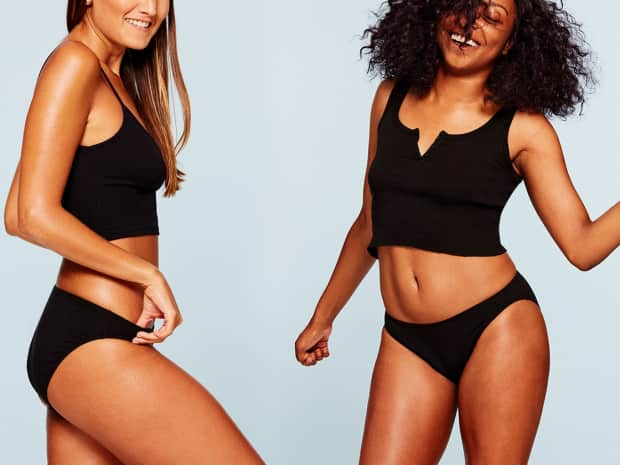
Learn how period panties are ecologically sustainable and economically smart.

Learn everything you need to know about condom sizes, types, usage, and options.

These nontoxic feminine care products are top-rated by Grove members.

These environmentally friendly and cost-effective feminine care items might just be your next sustainable swap.